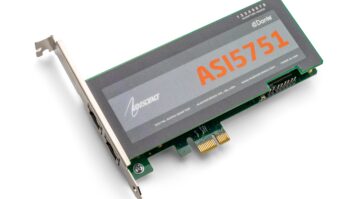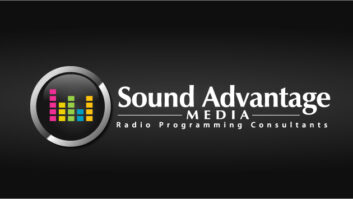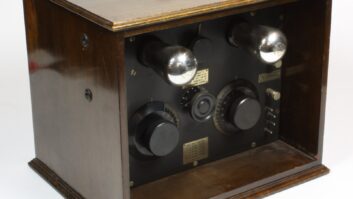LAS VEGAS Surround sound was the focus of several announcements at the recent CES convention, some including HD Radio angles.
Neural Audio Corp., which is adapting its 5.1 surround sound technology for HD Radio for use by broadcast stations, is courting automobile receiver manufacturers as well. Neural introduced its Spatial Environment Engine surround sound technology at CES.
SEE is a consumer version of the Neural development system designed to facilitate multichannel tests for receiver manufacturers that supply automakers. SEEDS delivers a two-dimensional stereo image using two to 256 speakers in the vehicle.
Neural’s SEE achieves multichannel audio through a spatial downmixing and rendering process.
On the broadcast side, 5.1 content is downmixed to stereo via a Neural/Harris 5225 Mix-Edit Appliance, allowing digital broadcasters to transmit 5.1 encoded surround sound.
For a consumer radio, the stereo downmix may be delivered to 5.1 or as many loudspeakers as desired, Neural says.
“We’ve been concentrating on the encoding, optimizing the codec performance. Now we’re introducing the decode side of the chain,” said Mark Seigle, Neural vice president of business development.
“From day one, we’ve said you have to look at the whole broadcast chain to make this happen.”
Neural says it now has several broadcast users of its technology. In radio, it lists XM, NPR, Clear Channel and Infinity; for TV, NBC, Fox and Viacom.
Neural Audio technology was a part of the first terrestrial digital broadcast of 5.1 surround sound for NPR’s 2004 “Toast of the Nation” New Year’s Eve Event, on which Radio World reported and was the only publication in attendance.
Seigle said the event showed that “real-world broadcast scenarios – different venues, different mixers, different content – all could survive quite nicely.”
“There’s going to be an educational process with mixers,” he said “There are a lot of recommendations we can make so the audio survives (the surround sound process) better, such as what mind of microphones a broadcaster is using at a venue and where are those placed.”
Neural surround technology also was used on a live local broadcast of a concert on KUVO(FM) in Denver in September, HD Radio’s first 5.1 live event.
Seigle said Neural is planning its next surround event, and hopes a commercial broadcaster is interested in using its technology in this way as well. Some broadcasters, such as Infinity’s KBKS(FM), Seattle, are airing some items in surround sound; XM is using it for one channel. At least two non-commercial stations are recording and airing some material in surround.
Through its relationship with Harris, Neural finds some radio groups are more interested in surround sound than others, depending on where they are in their HD Radio rollout.
The company heard good responses from OEM receiver manufacturers at CES, said Seigle.
XM uses Neural for one channel of surround sound content. Neural had several demo cars with various receivers showcasing surround content at CES. Listeners could hear excerpts of the “Toast of the Nation” broadcast or the XM channel.
Sirius Satellite Radio is using SRS Circle Surround for one channel, an employee confirmed.
Neural gets Ibiquity nod
Ibiquity Digital Corp. gave Neural’s surround sound technology the okay at CES, saying the system is compatible with HD Radio. The companies said Neural is the first spatial audio codec available for HD Radio use.
Ibiquity previously approved the SRS Circle Surround technology as compatible with its digital radio technology. Other companies, such as Coding Technologies/Orban and Telos/Fraunhofer, are interested in HD Radio applications as well.
As a result, members of the standards-setting body for radio are discussing how the technology relates to the digital transition.
Mike Lyons, vice president of aftermarket business development for Ibiquity, said the company is pleased that several surround systems are working with HD Radio in mind; he said Ibiquity encourages its broadcast and consumer electronics partners to realize “how powerful surround sound technology can be for FM radio.”
Observers attending the show told Radio World privately, however, that surround sound for digital radio faces challenges, noting that some systems such as SRS and Dolby, are established in the marketplace with receiver and automobile manufacturers, and other technologies are competing for position, including Neural, Fraunhofer/Telos and Coding Technologies/Orban.
Also at CES, two OEMs announced their first U.S. receivers that would include SRS Circle Surround Automotive technology. Panasonic, which has HD Radio products on the market, is including the technology in three mobile CD receivers and one in-dash DVD receivers. Panasonic expects to ship to retailers this month.
SRS says its Circle Surround Automotive creates an in-vehicle surround sound experience from any audio material over a system of four or more speakers. It delivers surround sound from any audio source, including mono or stereo broadcasts, HD Radio, satellite radio, standard CD and compressed music from a portable media player.
The technology can create the perception of a center speaker if one is not installed, according to SRS, Panasonic and Fujistu Ten.
Fujistu Ten is employing the SRS Circle Surround Automotive in an Eclipse brand aftermarket CD/DVD navigation receiver. Eclipse is also launching two standalone CD/MS receivers with MP3 and WMA decoding that include surround sound technology.
Automakers and manufacturers of OEM or aftermarket electronics license SRS Labs’ automotive technology. Companies using SRS in products include Eclipse, Honda, Johnson Controls, Kenwood, Panasonic, Toyota and Volkswagen.
Also at CES, Fraunhofer and Thomson joined with Agere Systems to introduce MP3 surround sound technology for the consumer and automotive markets. The partners say the technology will enable 5.1 channels surround-quality sound for Web-based music distribution, broadcasting systems, PC-related audiovisual or gaming applications, consumer electronics and automotive systems.
The partners demoed the technology at CES. For an evaluation encoder and player, go to: www.mp3surround-format.com











